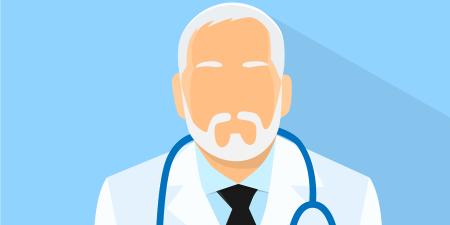Abstract
Students with sensory and physical disabilities are underrepresented in medical schools despite the availability of assistive technologies and accommodations. Unfortunately, many medical schools have adopted restrictive “organic” technical standards based on deficits rather than on the ability to do the work. Compelling ethical considerations of justice and beneficence should prompt change in this arena. Medical schools should instead embrace “functional” technical standards that permit accommodations for disabilities and update their admissions policies to promote applications from qualified students with disabilities. Medical schools thus should focus on what students with disabilities can do, rather than what they cannot do, because these students further diversify the health care profession and improve our ability to care for an expanding population of patients with disabilities.
Introduction
Enacted over 25 years ago, the Americans with Disabilities Act (ADA) promotes social justice by protecting people with disabilities (PWDs) from discrimination and prejudice; giving them fair access to goods, services, and education; and promoting equal opportunity [1]. The ADA was intended to ensure fairness and equality of opportunity for PWDs, including those with sensory and physical disabilities. Among other things, the ADA prohibits institutions of higher education from discriminating against a qualified person on the basis of disability in admission or recruitment and requires entities that must comply with the law to make reasonable accommodations in order to afford an otherwise qualified applicant an equal opportunity to participate in the institution’s programs [2]. “Reasonable accommodations” include modifications that do not fundamentally alter an academic program, such as changes in the length of time to complete a degree or in the way a course is conducted [3]. But “academic requirements that … are essential to the instruction being pursued by such [otherwise qualified] student or to any directly related licensing requirement will not be regarded as discriminatory” [3].
Unfortunately, equal opportunity for medical students with sensory and physical disabilities (SWDs) has not been realized. Roughly 19 percent of America’s noninstitutionalized population has a disability [4, 5] compared to less than 1 percent of medical students [6] and 2-10 percent of practicing physicians [7]. Yet accommodations—both technical (e.g., amplified stethoscope) and nontechnical (e.g., sign language interpreter)—are now widely available, effective, and used [8]. How can this discrepancy be explained?
Research suggests that a critical barrier to matriculation of SWDs in medical schools is the schools’ posted technical standards (TS) [6]. These are used to assess the qualifications of SWDs for the study of medicine [9]. However, many medical schools’ TS—which emphasize sensorimotor functions over cognitive abilities—effectively preclude SWDs from being admitted to medical school [10], despite many compelling examples of successful physicians with disabilities [11-15]. The schools’ TS pose a barrier because they “do not support provision of reasonable accommodations for students with disabilities as intended by the ADA” [16]. This, in turn, has resulted in legal interventions by SWDs to require schools to comply with the ADA and provide reasonable accommodations. For example, a federal court recently ordered Pacific Northwest University of Health Sciences to re-enroll a deaf student, finding that the reasonable and necessary accommodations of a sign language interpreter and captioning services would not alter the nature of the program and cause an undue burden on the school, and that the school’s concerns of patient safety were unfounded [17, 18]. These restrictive practices have affected persons with hearing [19, 20], mobility [14], and visual [21, 22] disabilities.
With the aim of promoting greater inclusiveness, the objective of this paper is to provide information about TS, challenge assumptions underlying “organic” TS, propose the use of “functional” TS [13, 23, 24] as an alternative to organic TS, and offer ethical justification for a policy of inclusivity for SWDs.
Organic and Functional Technical Standards
The Association of American Medical Colleges (AAMC) provided TS guidelines in 1979 and 1993 [25] to aid medical schools’ ability to assess SWDs’ qualifications for the field of medicine. However, the specific TS language is left up to each school’s admission committee to determine. Consequently, schools vary widely in how TS are incorporated, implemented, and made available. Many TS are vague and not clearly presented in the school admission materials or on schools’ websites [6].
We propose that one way to evaluate medical schools’ TS is to categorize them as either organic or functional. Organic TS highlight students’ limitations or deficits rather than their abilities. Thus, organic TS require students to demonstrate certain physical, cognitive, behavioral, and sensory abilities without assistance (e.g., for hearing, TS may require the student to be able to hear at a certain decibel without assistance). Functional TS, on the other hand, focus on the students’ abilities with or without the use of accommodations or assistive technologies. For example, for hearing, the student must be able to acquire the necessary information by hearing or other means. The functional TS approach allows SWDs to use rapidly developing, cutting-edge assistive technologies and accommodations to successfully perform essential tasks. Currently, the majority of US medical schools use organic TS [6].
Functional Challenge to the Justification for Organic Technical Standards
Organic TS are likely based on at least three assumptions: potential risks to patient safety posed by accommodations, accommodation costs, and ensuring performance standards such that graduates can pass licensure exams without accommodations [26, 27]. All three arguments, however, lack empirical support.
Patient Safety. Patient safety concerns are based on fear that patients could be endangered due to a physician’s disability, such as an inability to respond appropriately to emergencies in a timely or standard fashion [28]. However, SWDs are typically keenly aware of their limitations and develop communication and accommodation strategies that are practical in different environments and satisfy different needs [11, 12, 14, 15]. Furthermore, emergencies in clinical settings are rarely addressed by a single health professional, but more commonly by a team whose members each fulfill a different role. Hence a person with a mobility disability would not need to be able to intubate a cardiac arrest patient, for example. Many schools also have clinical simulations in which students can conduct “real-life” emergency scenarios that allow them to identify and refine any accommodations needed for actual emergencies. Despite concerns about patient safety, not a single legal case known to the authors has been filed in which patient harm resulted from an accommodation provided to an SWD.
Cost. Accommodations vary in type and cost. The ADA does not permit cost to justify discrimination practices against SWDs [6, 25]. Medical schools are ultimately responsible for paying for reasonable accommodations (though many do not acknowledge this, and some wrongly place this burden on the SWDs in their TS) [6]. Although costs vary tremendously, it should not be assumed that all accommodations are prohibitively costly [1]. Accommodations and assistive technologies rapidly change, and SWDs and PWDs can work with schools and disability offices to identify appropriate, cost-effective accommodations, which are listed and periodically updated on websites that focus on this issue [29-31].
Passing licensure examinations. A prevailing misconception is that incorporation of accommodations into licensure exam environments lessens licensure exams’ efficacy in ensuring that performance standards are met [6, 28]. The assumption that graduates with disabilities should be able to pass licensure exams without accommodations—despite the fact that they are entitled to them by law—is problematic. Licensure exams (e.g., United States Medical Licensing Examination®), objective structured clinical exams, and continuing medical education exams are required to comply with the ADA, including providing appropriate accommodations [28, 32] such as sign language interpreters, extended test times, and enlarged print sizes. Providing required accommodations thus complies with the law. From a practical perspective, such accommodations help maximize the independence of SWDs and have been implemented by a number of successful physicians with disabilities in their practice. Hence, the incorporation of accommodations into licensure exam environments is similar to the use of accommodations during the SWDs’ medical school training and beyond. These accommodations do not “advantage” SWDs but rather provide a tool to maximize their functional capacity that they may not have otherwise [33]. Furthermore, since SWDs use accommodations during their training and medical practice, the licensure exams assess the SWDs’ medical performances more accurately when SWDs are allowed to have their accommodations. From an ethical perspective, proscribing accommodations during licensure exams violates the ethical principle of social justice, as it systematically disadvantages a population of students who have the intellectual capacity to perform but need assistive devices to maximize their functional capacity. Hence, legal, practical, and ethical perspectives all support permitting accommodations during testing.
Organic TS thus cannot be justified on the basis of patient safety, accommodation costs, or licensure exam procedures as indicators of performance standards. Moreover, organic TS do not reflect the advancement of assistive technology and available accommodations that permit SWDs to be able to complete essential tasks in the field of medicine. Accordingly, we propose the use of functional TS instead of organic TS to ensure equity and justice.
Transitioning to a functional TS approach will require several steps. Deans should charge their admissions committee to take a functional approach by collaborating closely with the campus office for students with disabilities to articulate available and feasible accommodations for various applicants, rewrite their TSs accordingly, and update school websites to be supportive of SWDs. Medical schools should be familiar with disability-based student or health care provider organizations [34-37]. These organizations are a great source of information on best approaches for overcoming certain limitations, avenues for advocacy and mentorship, access to a network for individuals with disabilities, and at times they serve as a resource (e.g., by helping to find sign language interpreters). The Association of American Medical Colleges (AAMC) also should reiterate the expectation voiced by the organization’s previous president, Jordan Cohen, that the medical student population should more closely resemble the makeup of the patient population [38]. Finally, but not least, having a dedicated champion for SWDs at each medical school (probably from the diversity office) would provide a resource for both students and the school and ensure that appropriate attention is given to this issue.
Ethical Justifications for a Policy of Inclusion
Social justice considerations, as introduced above, provide a compelling ethical justification for schools to accommodate SWDs [39]. First, the acceptance and graduation of SWDs helps ensure fair access for patients with disabilities to physicians like themselves, since data show that minorities, including people with disabilities, are more likely to serve those of similar backgrounds [40-42]. Second, PWDs represent an underserved health population due to poor communication, lack of physical access, and reduced health knowledge, for example [39, 43]. Increasing the numbers of medical students and physicians with disabilities—who are more likely to serve PWDs—improves access to care for this population. Third, accommodating qualified SWDs promotes equal opportunity in matriculating and eventually practicing medicine. SWDs will benefit from personal and professional satisfaction, status, and job security in pursuing the profession of medicine. The former president of the AAMC, Jordan Cohen, emphasized that it is a “simple matter of social justice and equity” that our health care professional community mirror society also in the inclusion of physicians with disabilities [38].
Beneficence, the ethical imperative to do good for others, provides ethical justification for schools to accommodate SWDs. SWDs and physicians, due to their life experiences with disabilities, can effectively serve patients with disabilities who face medical issues [39, 41]. Students and physicians with disabilities better understand and empathize with PWDs than physicians without disabilities [39, 41]. A diverse population of physicians and students—including those with disabilities—benefits health care training and work environments by introducing new strategies for engaging with, and caring for, both general patients and PWDs [42]. While previous research has demonstrated the importance of diversity and inclusion of clinicians with disabilities in the health care workforce [39, 41], our personal experience and that of other faculty is that disability awareness and disability health training remains a weakness in most schools’ curricula [44-46]. Actively increasing the number of SWDs—by not discriminating against them in the admissions process and after they matriculate—will likely result in students and physicians with disabilities who not only provide patients with clinicians who have a deep understanding of disability health but also contribute to educating fellow clinicians and students on disability-related health issues.
Conclusion
In short, the use of organic TS raises ethical problems from social justice to beneficence considerations. Schools should transition to functional TS and accommodation policies that encourage applications from SWDs. Organic TS are outmoded in today’s world of extensive technical and nontechnical accommodations, while functional TS use technical solutions and accommodations to help SWDs safely deliver patient care. Focusing on what SWDs can do, rather than on what they cannot do, results in two outcomes. First, it helps dispel current myths that SWDs are unable to meet the demands of medical school and medical practice, thus realizing the legal and ethical imperative for social justice embodied in the ADA. Second, it benefits society by providing patients with physicians who are like them, thus improving patient outcomes.
References
- Kopelman LM. Ethical assumptions and ambiguities in the Americans With Disabilities Act. J Med Philos. 1996;21(2):187-208.
-
Americans with Disabilities Act, 42 USC sec 12182 (1990).
-
34 CFR sec 104.44 (2000).
-
Brault M. Americans with disabilities: 2010. United States Census Bureau; 2012. http://www.census.gov/prod/2012pubs/p70-131.pdf. Accessed June 24, 2016.
-
United States Census Bureau. Characteristics of the group quarters population in the United States: 2010 American Community Survey 1-year estimates. http://factfinder.census.gov/faces/tableservices/jsf/pages/productview.xhtml?src=bkmk. Accessed June 24, 2016.
- Zazove P, Case B, Moreland C, et al. US medical schools’ compliance with the Americans with Disabilities Act: findings from a national study. Acad Med. 2016;91(7):979-986.
- DeLisa JA, Thomas P. Physicians with disabilities and the physician workforce: a need to reassess our policies. Am J Phys Med Rehabil. 2005;84(1):5-11.
-
Atcherson SR, Moreland C, Zazove P, McKee MM. Hearing loss: hearing augmentation. FP Essent. 2015;434:18-23.
- Eickmeyer SM, Do KD, Kirschner KL, Curry RH. North American medical schools’ experience with and approaches to the needs of students with physical and sensory disabilities. Acad Med. 2012;87(5):567-573.
- Wainapel SF. Unjustified barriers for medical school applicants with physical disabilities. AMA J Ethics. 2015;17(2):160-163.
-
Henkel G. Deaf hospitalist focuses on teaching, co-management, patient-centered care. Hospitalist. August 1, 2014. http://www.the-hospitalist.org/article/deaf-hospitalist-focuses-on-teaching-co-management-patient-centered-care/. Accessed June 24, 2016.
-
James Post, MD website. http://jamespostmd.com/. Accessed June 24, 2016.
-
Task Force on Health Care Careers for the Deaf and Hard-of-Hearing Community. Building Pathways to Health Care Careers for the Deaf and Hard-of-Hearing Community. Rochester, NY: Rochester Institute of Technology; 2012. http://www.rit.edu/ntid/healthcare/task-force-report. Accessed June 24, 2016.
-
Templeton D. Meghan Wilson’s impossible dream to be doctor comes true. Pittsburgh Post-Gazette. May 19, 2013. http://www.post-gazette.com/local/region/2013/05/19/Meghan-Wilson-s-impossible-dream-to-be-doctor-comes-true/stories/201305190253. Accessed June 24, 2016.
-
Zazove P. Deaf doctor makes patients feel heard. CNN. May 20, 2015. http://www.cnn.com/2015/05/20/health/human-factor-philip-zazove/. Accessed June 24, 2016.
-
Zazove, Case, Moreland, et al, 979.
-
Featherstone v Pacific Northwest University of Health Sciences, No. 1:CV-14-3084-SMJ, 2014 WL 3640803 (ED Wa 2014).
-
Argenyi v Creighton University, 703 F3d 441 (8th Cir 2013).
-
Jaschik S. Federal judge orders Creighton medical school to provide specific accomodations—different from those it offered—to hearing impaired student. Inside Higher Ed. December 23, 2013. https://www.insidehighered.com/news/2013/12/23/us-judge-orders-creighton-medical-school-provide-specific-services-deaf-student#sthash.oI00Ok9F.dpbs. Accessed June 24, 2016.
-
New J. Fighting their way into medical school. Inside Higher Ed. July 28, 2014. https://www.insidehighered.com/news/2014/07/28/judge-orders-medical-college-accommodate-deaf-student. Accessed June 24, 2016.
-
Jaschik S. Iowa Supreme Court rules that chiropratic college cannot reject a student’s request to meet requirements for analyzing X-rays. Inside Higher Ed. June 30, 2014. https://www.insidehighered.com/news/2014/06/30/iowa-supreme-court-says-chiropractic-college-discriminated-against-blind-student#sthash.J1XuRrSV.dpbs. Accessed June 24, 2016.
-
Ohio Civil Rights Commission v Case Western Reserve University, 666 NE2d (Cal 1996).
-
National Organization of Nurses with Disabilities. Fast facts: medical and allied health careers: technical standards and individuals who are deaf or hard of hearing. http://www.nond.org/resources/Medical-and-Allied-Health-Careers-PEPNET.pdf. Published October 2015. Accessed August 15, 2016.
-
Schwartz M. Technical standards for admission to medical schools: deaf candidates don’t get no respect. http://surface.syr.edu/cgi/viewcontent.cgi?article=1079&context=lawpub. Syracuse University College of Law Faculty Scholarship 80. Published July 24, 2012. Accessed August 23, 2016.
-
Watson JE, Hutchens SH. Medical students with disabilities: a generation of practice. Wilkerson DJ, ed. Association of Medical Colleges; 2005. https://members.aamc.org/eweb/upload/Medical%20Students%20with%20Disabilities%20A%20Generation%202005.pdf. Accessed June 24, 2016.
-
Learning objectives for medical student education—guidelines for medical schools: report I of the Medical School Objectives Project. Acad Med. 1999;74(1):13-18.
- VanMatre RM, Nampiaparampil DE, Curry RH, Kirschner KL. Technical standards for the education of physicians with physical disabilities: perspectives of medical students, residents, and attending physicians. Am J Phys Med Rehabil. 2004;83(1):54-60.
- Melnick DE. Commentary: balancing responsibility to patients and responsibility to aspiring physicians with disabilities. Acad Med. 2011;86(6):674-676.
-
Association of Medical Professionals with Hearing Loss. Stethoscope. https://amphl.org/category/stethoscope/. Accessed June 24, 2016.
-
Disability.gov. Disability.gov’s guide to assistive and accessible technologies. https://www.disability.gov/resource/disability-govs-guide-assistive-technology/. Accessed June 24, 2016.
-
Institute for Matching Person & Technology website. http://matchingpersonandtechnology.com. Accessed June 24, 2016.
-
Liaison Committee on Medical Education. Standards, publications, & notification forms. http://lcme.org/publications/. Accessed August 29, 2016.
- Moreland CJ, Latimore D, Sen A, Arato N, Zazove P. Deafness among phsyicans and trainees: a national survey. Acad Med. 2013;88(2):224-232.
-
ExceptionalNurse.com website http://www.exceptionalnurse.com. Accessed June 24, 2016.
-
Association of Medical Professionals with Hearing Loss Facebook page. https://www.facebook.com/amphl/. Accessed June 24, 2016.
-
United States Department of Labor. National Organization of Nurses with Disabilities. https://www.dol.gov/odep/alliances/nond.htm. Accessed June 24, 2016.
-
University of California, San Francisco Medical Student Disability Services. Coalition. http://meded.ucsf.edu/msds/coalition. Accessed June 24, 2016.
-
Cohen J. A word from the president: reconsidering “disabled” applicants. AAMC Reporter. 2004;13(9):2.
- DeLisa JA, Lindenthal JJ. Commentary: reflections on diversity and inclusion in medical education. Acad Med. 2012;87(11):1461-1463.
- McKee M, Barnett SL, Block RC, Pearson TA. Impact of communication on preventive services among deaf American sign language users. Am J Prev Med. 2011;41(1):75-79.
-
McKee MM, Smith S, Barnett S, Pearson TA. Commentary: what are the benefits of training deaf and hard-of-hearing doctors? Acad Med. 2013;88(2):158-161.
-
Smedley BD, Butler AS, Bristow LR, eds; Institute of Medicine Committee on Institutional and Policy-Level Strategies for Increasing the Diversity of the US Health Care Workforce. In the Nation’s Compelling Interest: Ensuring Diversity in the Health-Care Workforce. Washington, DC: National Academies Press; 2004.
-
National Council on Disability. The Current State of Health Care for People with Disabilities. https://www.ncd.gov/publications/2009/Sept302009. Published September 30, 2009. Accessed June 24, 2016.
- Byron M, Cockshott Z, Brownett H, Ramkalawan T. What does “disability” mean for medical students? An exploration of the words medical students associate with the term “disability”. Med Educ. 2005;39(2):176-183.
- Crotty M, Finucane P, Ahern M. Teaching medical students about disability and rehabilitation: methods and student feedback. Med Educ. 2000;34(8):659-664.
- Symons AB, Fish R, McGuigan D, Fox J, Akl EA. Development of an instrument to measure medical students’ attitudes toward people with disabilities. Intellect Dev Disabil. 2012;50(3):251-260.



